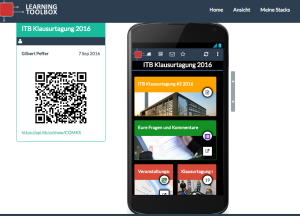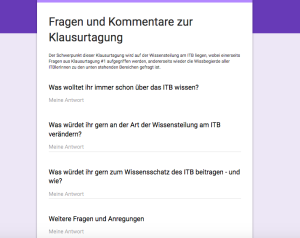Thoughts on “Digital divide 4.0” – Part One: How to overcome such divides?
With this post I will start a series of reflections on the concept “Digital Divide 4.0” (to be explained below). These reflections have been inspired by recent experiences with fieldwork for our ongoing EU-funded Learning Layers (LL) project and in particular with its key product the Learning Toolbox (LTB). In particular these thoughts have been triggered by our workshops last week (see my previous posts) and our working visit to the construction sector training centre Bau-ABC (to be covered in my next posts). All of a sudden I started thinking, what kind of ‘digital divide(s)’ we are encountering. And in addition to this, I got struck by the question: In what ways can the Learning Toolbox help us to overcome such divides?
The different meanings of ‘digital divide’
As I see it, debates on the topic ‘digital divide’ have come and gone in several waves. In the more recent debates the authored have characterised their point of view with expressions like ‘Digital divide 2.0’ or (in some cases) ‘Digital divide 3.0’. This, of course has been shadowing the authors view on the evolution of web technologies, uses of web and the perception of the gaps that cause the respective divide.
I am not an expert on this topic but my rough picture of this history is the following:
- The initial discussion on the topic ‘digital divide’ (which we could now label as the phase of ‘Digital divide 1.0’) drew attention to lacking access to computer technology and computer literacy as main problem. Thus, strategies to overcome digital divide were directed to provide access (private and public) to devices and to promote computer literacy by different campaigns involving formal and informal learning opportunities.
- The second phase of these debates – named by some authors as ‘Digital divide 2.0’ – has shifted the emphasis on computers and computer literacy to Internet, World-Wide Web and to social networks. The key problem is seen in the lacking or poor Internet connections and web-literacy. Thus, the strategies to overcome digital divide have emphasised the necessity to promote access to internet and to engage the users as participants (clients) of social networks and networked services.
- The third phase – arising from the previous one and only rarely distinguished as ‘Digital divide 3.0’ shifts the emphasis to mobile devices, in particular to smartphones. In this perception the lack of Internet access via mobile devices (and/or the lacking capability to use them for real-time Internet searches and communication) is the main problem addressed by the concept. And, consequently, the main emphasis is given on informal coaching, tutoring, mentoring, scaffolding etc. to get the potential users over the hurdle and turn them into active users.
What are we missing from this picture and how – in this respect – could these divides be overcome?
Whilst the above presented picture seems valid, to us it is one-sided: the technologies (as such) appear as the driving force and the users only need to get access to the devices and to the respective ‘literacy’ to use them. In this way the ‘ordinary’ users need to be educated to be able to use the technologies in the way the designers have planned.
However, from starting from very the beginning of the LL project and up to present date we have experienced another type of problem constellation that we could characterise as ‘Digital divide 4.0’. Here we have a situation in which the potential users have access to appropriate devices and to average digital literacy but are confronted with a multitude of stand-alone apps, tools, platforms and services – the relevance of which remains a riddle to them. Thus, the users lack orientation and guidance that would help them to make informed choices for options that match their needs. This can be characterised as a Tantalos-situation – by analogy to the antique tale. (Tantalos was stuck into position next to fruit treas that were quasi at his reach but kept their branches out of his reach. Likewise, he was standing next to a river, but when he bowed down to drink, the water escaped his lips.) Therefore, this new divide is not characterised by lack of access to (and command of) particular technologies but lack of overview and strategic mastery of them in terms of user-competences.
What is so specific in the Learning Toolbox regarding ‘Digital divide 4.0’?
In the light of the above we are happy to announce that on several occasions we have been able to witness that the introduction of the Learning Toolbox has clearly contribute to processes that help to overcome such Tantalos-situations. At the moment our experiences are episodic and limited in numbers. Yet, we can start looking at the turning points and at the criteria for overcoming the kind of ‘Digital divide 4.0’ that has been typical of the situation before our pilot activities.
– – –
I guess this is enough as an introduction to the topic. In my next post I will have a look at our fieldwork and on our observations concerning the use of the Learning Toolbox to overcome the kind of digital divide I discussed above.
More blogs to come …


